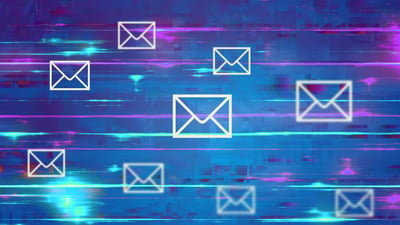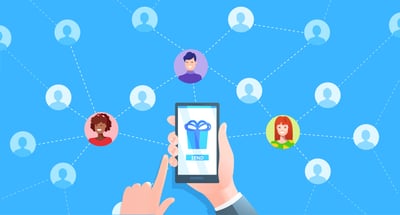
Email blasts are hardly a thing of the past, and there are some excellent reasons behind that.
The main reason is the increasing popularity of email marketing. Which is only logical, as evidenced below:
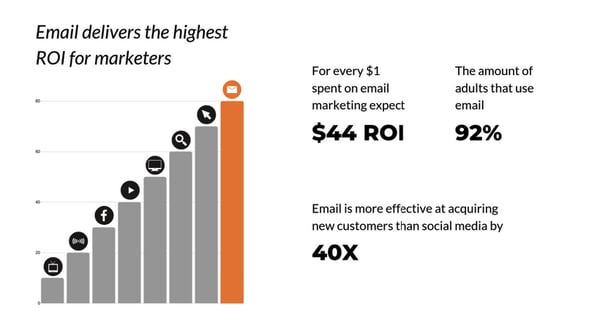
Forty-four per dollar spent is not something every marketing channel can do. Of course, email marketing and email blasts have some fantastic metrics, which is why marketers trust email marketing and look for tips, tricks, and the best email marketing platforms that will allow their ideas to flourish.
However, email blasts are not easy to create and can go from fun to annoying in the blink of an eye. But don’t worry – you'll find everything you need to do to master sending email blasts and making them work below.
Today, an email blast doesn't differ too much from an email campaign, but did it start like that? The answer is no.
An email blast consisted of one email message sent to a large email list. Traditionally, an email blast used to be non-personalized, non-segmented, and all-around messy and uncomfortable. And it didn't look right, either.
In the past, marketers would design an email blast campaign to generate more clicks, with no lead generation strategies at hand and without lead nurturing as the primary goal, making email blast campaigns look a little too much like spam messages:

So, irrelevant, unsolicited messages. Does this sound nice at all? If your answer is no, you're in luck.
Email blast marketing used to be vastly different from what we call "email marketing best practices" today. While this practice's main point was to showcase something new or exciting about a brand or a service, it looked more like a newspaper's front page and less like the newsletters we love today.
Let's see what the differences between email blasts and email campaigns used to be.
An email campaign is comprised of a message sent to a segment of a larger email list – or perhaps more than one segment – but still not the email list as a whole.
This message needs to be sent out after taking two key parameters into account:
What is the main difference between an email campaign and an email blast campaign of the past? It would be the element of personalization and segmentation or lack thereof. Today, things are a little different. It's easier to send the same message to your recipients and change the main components that make a difference.
In a world where AI has taken over, and data scientists can use machine learning to create small segments, and eventually a message that will resonate with each recipient, where do email blasts stand?
Change your outlook on things. Marketers have been lead to believe that email blasts are not a good thing. Why is this not true? How can we turn this around in email blasts marketing favor? Email blast marketing is not a bad thing in the modern world. There are plenty of options available to make a marketer's job way more effective.
An email blast campaign needs to keep the brand front and center, but always have the recipient in mind. Marketers can turn the email blast narrative around by considering the particular interest the recipients have on their brand and create an email that will provide them with valuable information that will, eventually, turn email opens to clicks and conversion.
Here are four email blasting best practices:
Email blasting is essentially email campaigning. Therefore, you need emails that have a clear benefit – meaning that you can't afford to have emails that may bounce, be bothersome, or unsolicited or end up in the recipient's spam folder.
So what makes emails go to spam? One of the reasons would be content that triggers spam filters. This is not to be taken literally though, seeing as there is no magic sauce that can increase deliverability when it comes to content.
However, there are some words that can trigger spam filters:
Another surefire way for your email newsletter to end up in the spam folder is to create something with zero image-to-text balance. When creating a newsletter, it’s highly important that you include both text and images.
Image-only emails end up in spam and text-only emails aren’t exactly interesting. Non-optimized links in your content can also trigger the spam filters. You need to make sure they’re readable throughout devices and clickable.
Also, keep this in mind:
“Generic link shorteners can trigger anti-spam filters and get your newsletter blocked. Branded short links are known to increase trust between the brand and its audience as well as increased deliverability rate, engagement, and CTR.”
Davide De Guz
Founder at Rebrandly
Now that your content is optimized, let’s see how important the right email service provider is. Choosing the right email service provider (ESP) can ensure that your email blast campaign will be sent right to the recipient's inbox. Run an email deliverability test and make sure that you're within email size limits.
Also, ensure you implement email authentication protocols like DMARC to improve email deliverability.
Doing this once will allow you and your marketing team to create a brilliant email blast campaign that will stand out, rather than focusing on whether or not your content will get delivered.
Sending an email blast to prospects that haven't subscribed is a clear violation of the GDPR. But this will be just one of the problems you'll face.
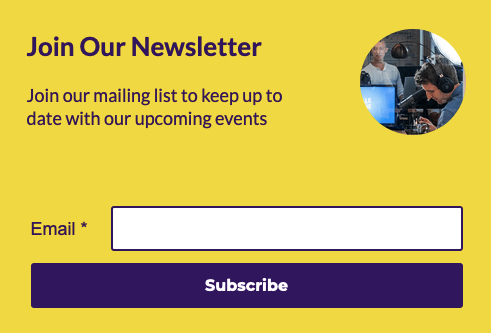
This is a subscription form, and along with a landing page, it's one of the best ways to get leads and subscribers that would love to hear from you and your brand.
Including something like that on your website, instead of buying an email list – which is terrible practice – will keep your credibility intact when it comes to contacting prospects. They've decided to give you their email address willingly. When creating a subscription form, make sure you're extra clear on what you're asking for, in this case, the prospect's email address, and how and when you're going to contact them.
The three most important aspects to take care of before you start doing your content magic. Let's see what is so special about them.
In the case of email blasting, great newsletter ideas are not nearly enough, if you want to make it: You’ll need prospects that want to receive your email newsletters. In other words, you need to keep a clean email list.
A clean email list is what your brand needs to survive and this doesn't just include prospects that have opted to receive your newsletters and email blast campaigns. By keeping a clean email list, you make sure there are no unsubscribers or invalid email addresses to make your emails bounce. Email bounces can potentially harm your deliverability rates just as much as spam reports.
Not to mention that keeping unsubscribers in your email list will harm not just your email blast campaign, but also your sender reputation, your reputation as a brand and could potentially lead to loss of revenue and MRR churn.
Email blasting means creating one specific type of content that will resonate with people's wants and needs, which can be tricky since you're about to send it to many people.
This is where segmentation comes into play. Segmenting your email list will allow you and your team to come up with a type of content that will be just right.
For example, if your primary target audience is millennials, it would be better to create a QR code for your email blast that could lead to the action you'd like them to take. It could gamify their experience and keep them engaged for longer.

Just take a look at your data and determine the age group your email blast will target, the region, the income, educational level, and so on. By doing that, you’re in for:
Personalization is an essential component when designing an email marketing strategy as a whole. Let's assume that you know the task at hand very well. You have segmented your list and decided on your content. Everything seems good to go.
Not so fast. Study your data and find the micro-segments that will help you modify your message in a manner so specific, that it'll be like speaking to the recipient directly. It's next-level personalization. Your data can also show you when it'll be the best day (or time of day) to send your email blast out to the segment you've decided to use.
Behavioral emails are also a vital component of your personalization game. Email blasts or not, you need to know what makes your target audience tick. Consult a heat map and your data and see what triggers purchases. It will allow you to understand the actions that warrant an email. Personalization nowadays goes way beyond the "Hey, John!" in the email subject line.
It's easy for you to know and understand the value of your product or your service. After all, you're the marketer. But how easy is it for your prospects to realize that value and turn this realization into a purchase?
First in order of business, would be to adjust the tone of voice you use, to one the segment of your audience you're working on, actually will respond to, upon opening your email. Careful – we don't mean to change your tone of voice. That could be harmful, as your brand's tone of voice stems from studying your audience and finding out what works for them.
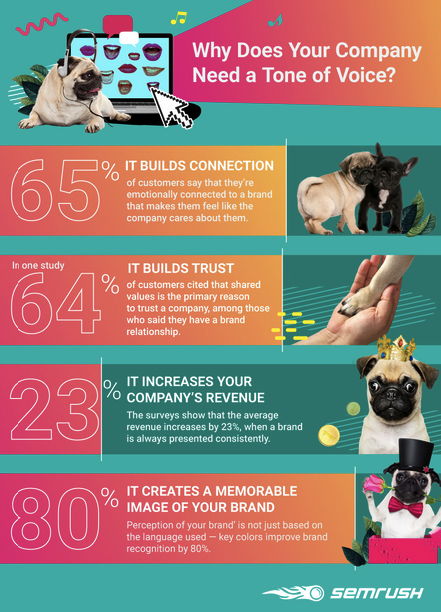
As a person, you speak in a certain way, and you adjust that way to match each occasion. A brand needs to do the same for all intents and purposes – email blasting included. Once you decide on the tone of voice, craft your subject line, and keep your goal in mind.
Do you need more purchases or more awareness? Perhaps you need more traffic or would like to dip your toe in referral marketing? Why are you sending out this email blast campaign? Whatever the answers are to those questions, they're what you need to keep in mind while designing your email blast campaign.
For example, this is the subject line of an email by Dunkin', sent out on Mother's day:
The end goal here was for the brand to raise awareness and interact with their audience, boosting engagement and conversion through e-gift cards.
Here's the email:
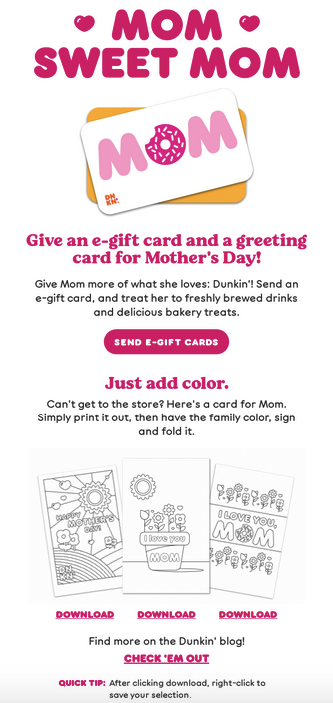
Notice the visuals, content, and CTA? It all boils down to a Mother's day card. This action, coupled with the donuts offered by the brand on Mother's day and everyone's love of baked goods, eventually lead to more clicks, more engagement, and more conversion.
This email is a prime example of what you want to do, because:
Last but not least, should you step up your game with a landing page or a gamification element? Yes, you should. Landing pages and gamification are brilliant for two things: engagement. And engaged users will get to know and love a brand that stays in their minds for all the right reasons.
Landing pages can help skyrocket your email blast marketing game. Combine them with a gamification element, perhaps a quiz, like Lacoste did in the example below:
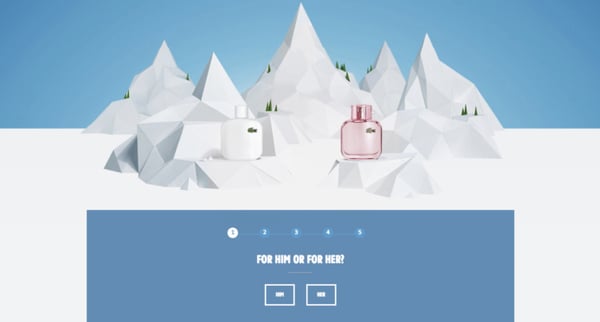
The aim here was to engage last-minute buyers and help them find the perfect gift while staying in their minds for helping them find what they wanted quickly and with minimal friction. And whether or not one was interested in purchasing a Lacoste perfume as a last-minute gift, allowing them to have fun with your brand creates a memorable experience.
So, perhaps the brand's short-term goal wasn't met -some didn't need a perfume, but the long-term goal: more engagement and staying in a prospect's mind was all there.
Let's take a look at the pros and cons of email blasts and email blast campaigns.
And those are the reasons why email blast campaigns aren't the devil anymore and can help your marketing game. But what about the cons?
This stems from the email blast pro number two: strength in numbers. The more people you send your email blast to, the more could potentially find it to be unsolicited and unwanted.
This is pretty self-explanatory. Proper personalization and segmentation mean sending out a message that looks and feels like it was written just for the prospect. This wouldn't be the case without geolocation segmentation, which can't always be possible when it comes to email blast campaigns.
Email blasts and email marketing campaigns are not that different anymore. Following the necessary steps of segmentation and personalization and making sure to offer value is the main way into a prospect's heart.
Adding social media buttons at the bottom of every email can help boost your social media marketing efforts and make your brand look more credible as well. And finally, always A/B test to make sure you know what works and create an email blast campaign by making educated choices that will resonate with your brand tone and put your brand right front and center.
Téa Liarokapi is a Senior Content Writer for Moosend, an email marketing and marketing automation platform, and an obsessive writer in general. In her free time, she tries to find new ways to stuff more books in her bookcase and content ideas – and cats – to play with.
Customer reviews should be monumentally important to you for one reason: they’re important to...
 by Mike O'Brien
by Mike O'Brien
Referral marketing is an amazingly effective tool when employed correctly.
 by Derick Okech
by Derick Okech
Building connections with your customers isn't just a strategy for small businesses.
 by Lee Shields
by Lee Shields
Customer reviews should be monumentally important to you for one reason: they’re important to...
 by Mike O'Brien
by Mike O'Brien
Referral marketing is an amazingly effective tool when employed correctly.
 by Derick Okech
by Derick Okech
